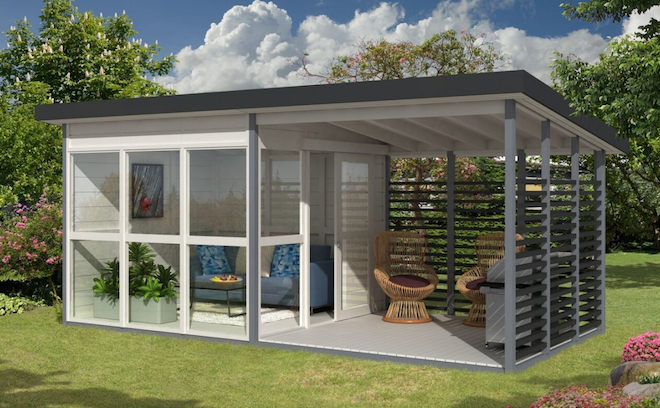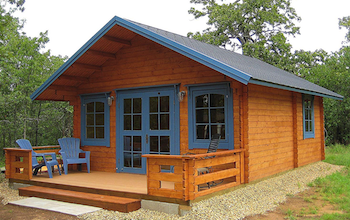Some Americans apparently love to fantasize about an extreme downsize that reduces their personal space to the bare minimum and slashes their cost of living to a fraction of what it once was. Hence, the rise of the tiny house trend.
How many people are actually trading in normal-sized abodes and going tiny? That’s not entirely clear, but they sure do love to watching others do it.
HGTV has capitalized on the fascination, launching a House Hunters spinoff that features home shoppers in the market for something tiny – like, less than 600 feet tiny.
Now, Amazon is making this tiny trend possible for any home shopper, offering a number of prefabricated houses on its site – and some are selling like hotcakes.
 The 172-square-foot Allwood Solvalla Studio Cabin Kit – which can supposedly be assembled by two adults in eight hours – recently went viral and sold out almost immediately.
The 172-square-foot Allwood Solvalla Studio Cabin Kit – which can supposedly be assembled by two adults in eight hours – recently went viral and sold out almost immediately.
But fear not tiny house lovers, it’s back in stock and available for $7,250 (plus free shipping!) for anyone in the market for an “ideal home office or guest house.”
Looking for something slightly more substantial? Amazon’s got you covered.
Check out this this Lillevilla Cabin Kit, also by Allwood, that boasts a sleeping loft and is all  of 292 square feet. This one will cost you more, though, with a pricetag of $18,800.
of 292 square feet. This one will cost you more, though, with a pricetag of $18,800.
A quick search of the site reveals a whole lot of these “container houses” and “cabin kits,” with prices that range from $5,000 to $65,000.
And, of course, there are additional costs to consider that are not mentioned in the product descriptions, like utility hookups or, if you live in a cooler climate, insulation.
A recent MarketWatch article noted that the prefab, modular housing industry is growing, with revenue jumping 8.6% from 2013 to 2018, according to data from IBISWorld, including a 4.1% spike in 2018 alone.
Chris Schapdick, author of The Joy of Tiny House Living, said a lack of housing affordability is giving rise to alternative options, fueling the tiny house movement.
“Whether it's prefab or some other solution, there is a huge appetite for alternatives to traditional housing. This trend is driven by a number of factors, including affordability and a general frustration with traditional pathways to creating extra or primary living space,” Schapdick said. “The innovation and array of options is only going to increase since more people are exploring ways to live that don't cost as much as what the housing market has on offer."
But is there more to this tiny house trend than just the desire for a cool garden shed or funky detached office? Will more people really flee their McMansions for a simpler, cheaper life?
Maybe…but probably not, affordability be damned. But it sure is fun to dream about.





